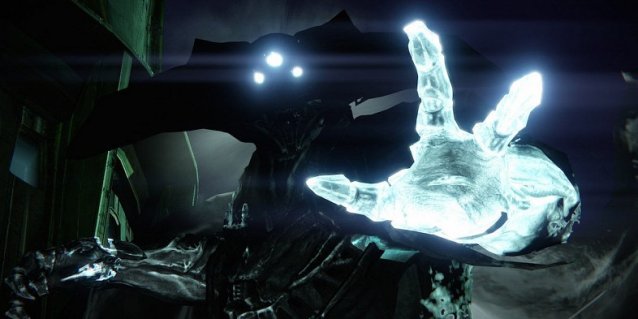

The original Slender title was a free-to-play game which proved to be a very entertaining, though short, experience. Gamers would simply try and run through the woods collecting notes before Slender Man could catch up to them, and the cryptic and persistent adversary proved to be a smash hit with fans of the horror genre. Expanding on this, Blue Isle Studios created a paid-for standalone game that runs across 5 atmospheric chapters. Although the world has much more to offer in its environments, Slender: The Arrival doesn’t deliver the constant entertainment that the first one had in such high abundance.
As one might expect from a smaller studio, the graphics of Slender: The Arrival are a mid-level affair: they won’t be blowing anyone away, but they’re not terrible either. Since most of the game is traditionally viewed through a choppy camcorder interface, this isn’t really a problem. However, some items in the environment have their own graphical issues, like knobs on counters shining brightly through the darkness, or falling leaves you can see perfectly from 200 yards when everything else, including the tree itself, is completely dark. Blue Isle Studios did a fantastic job however, in creating scary enemies and fullscreen jump-scares that are sure to shift people beyond the edge of their seats. Ultimately, the visual package is something you’d expect from the Unity engine – it looks like a Source-based modification for a Valve title.
The studio tried to take the core concept of their original smash hit and extend it across multiple levels, but at its core this game was simply not built to last for so long. Repetitive note-finding quests reduce the experience to several chapters of finding pieces of paper while Slender Man and his cohorts get progressively more aggressive in their hunt for the player. While this leads to some genuinely intense moments, by the beginning of the second chapter players will already be yearning for something fresh to happen – and ultimately, that wish never materializes. In a game so surprisingly short (it can be completed within 2 hours), having such repetitive mechanics becomes the biggest burden of The Arrival.
On the bright side, Slender: The Arrival does a fantastic job using audio to add to the experience throughout the story. From hearing footsteps that aren’t your own to the delivery of screams and haunting sounds, Blue Isle Studios has mastered the craft of creating an uneasy atmosphere using just sound. Combined with a good usage of atmospheric lighting, the details in the environments are certainly a step up from the original. It may not feel like a genuinely lived-in area, but players won’t be focusing on that as they look at the haunting chalk etchings of the paranoid characters who had come through earlier. Unfortunately, even these characters aren’t fleshed out in a way to develop any kind of attachment.
Like a growing amount of games in the survival horror genre, the player has no way of actually fighting back against the enemies in Slender. Using a flashlight with limited battery, running is the only option to survive. This creates a natural setting of fear that works well for the game, though it relies too heavily on the atmosphere to create this feeling during the long, drawn-out fetch quest sequences. For the moments when Slender Man’s silhouette briefly appears at varying distances, players will be drawn into what made the original game such a surprise hit – and the jump scares will follow suit. It’s just a shame these moments are spread so far apart, leaving The Arrival with a sporadic rhythm that will be off-putting to most.
In comparison to similar games like Amnesia: The Dark Descent, A Machine for Pigs and Gone Home, the weaknesses in Slender: The Arrival’s plot become much more prominent. The backstory is never developed to an appropriate extent, and players will often pick up information about items which are then located in the very next room or location, which hurts the immersion more often than it helps. The same can usually be said for keys to locked doors, which are often left in plain sight close to the door they match, and makes them neither a fun gameplay element or an objective with impact.
Slender delivers plenty of solid jump-scares spread across the story mode, but there’s far too much repetitive gameplay in between the actual action to make it worth the experience. In a campaign so unexpectedly short, the fact that repetitive gameplay becomes such a huge hurdle really says it all. Fans of Slender Man will still enjoy their experience, but those on the fence about purchasing this game are better off leaving Slender to stay out in the woods.
Slender: The Arrival is available now on PC and Mac.
–
follow John Jacques on Twitter @Makelevi.




 5 Nights at Freddys animatronics guide Bonnie, Chica, Freddy, Foxy
5 Nights at Freddys animatronics guide Bonnie, Chica, Freddy, Foxy Dark Souls 2 Weapons and Shields Guide - Axes and Greataxes
Dark Souls 2 Weapons and Shields Guide - Axes and Greataxes Building the Ultimate MMO Society
Building the Ultimate MMO Society MGS V: The Phantom Pain Unlocking Guide - How To Customize Weapons
MGS V: The Phantom Pain Unlocking Guide - How To Customize Weapons The Best Star Wars Books All Fans Need to Read
The Best Star Wars Books All Fans Need to Read